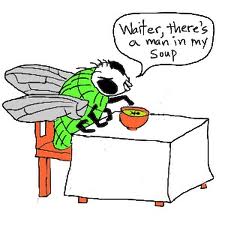(This talk was given in Fulda in Dec 2013, and delivered in German, with a simultaneous English translation, so apologies if I misunderstood any of the translation, and for the sparseness of my notes)
Dr Schoneberg studied Roman Catholic Theology and philosophy in Halle and Erfurt, and was a Catholic Priest in Erfurt. He subsequently studied medicine at Martin-Luther University in Halle-Wittenberg. He is a medical specialist in surgery in Frankfurt, and holds a doctorate in medicine. He is medical director for emergency medical services, and also senior emergency physician. He runs a private medical clinic for alternative medicine.
*****
The aim of the talk was to show the relationship between a set of diagnostic tumour-marker tests, the EDIM, and oxidative stress in the human body. These tests are not the usual conventional markers. They enable the practitioner to track whether or not treatments are successful in reducing oxidative stress in the body.
What is the EDIM tumour-marker test?
EDIM is an acronym for Epitope Detection In Monocytes. It is a set of two diagnostic tests that are alternatives to conventional tumour markers. These two EDIM tests are the TKTL1 and Apo10 blood tests. Research conducted into these tests seem to indicate that they can show early signs of metastasis even when established tumour markers and clinical signs and imaging (like Pet Scans) do not do so.
Apo10 is a specific tumour protein that is not normally detectable in normal cells. TKTL1 stands for Transketolase-like 1 enzyme. Cancer cells display high levels of glycolysis (rapid fermentation of glucose) a process which is also known as the Warburg effect – it’s what enables cancer cells to survive in the absence of oxygen. Lactic acid is also produced by cancer cells, even in the presence of oxygen. The lactic acid also protects the cancer cell from the body’s immune system. The TKTL1 enzyme is responsible for this effect.
http://www.tktl1.de/?Introduction
http://www.tavarlin.com/downloads/2009PosterFIGO.pdf
http://www.tavarlin.com/downloads/FutureOncology.pdf
What is oxidative stress and its relation to redox reactions? (adapted from wikipedia)
A Redox reaction is an amalgamation of two processes: a reduction and oxidation. Substances that have the ability to reduce other substances (cause them to gain electrons) are said to be reductive or reducing and are known as reducing agents, reductants, or reducers.. Substances that have the ability to oxidize other substances (cause them to lose electrons) are said to be oxidative or oxidizing.
An example of oxidisation is rusting (oxygen causes the iron to rust).
An example of a redox process is photosynthesis in plants which involves the reduction of carbon dioxide into sugars and the oxidation of water into molecular oxygen.
Free radical reactions are redox reactions that occur as a part of homeostasis and killing microorganisms, where an electron detaches from a molecule and then reattaches almost instantaneously. Free radicals are a part of redox molecules and can become harmful to the human body if they do not reattach to the redox molecule or an antioxidant. Unsatisfied free radicals can spur the mutation of cells they encounter and are, thus, causes of cancer.
What is the relationship between oxidative stress and redox reactions?
Oxidative stress reflects an imbalance between a system’s ability to manage redox and any resulting damage. Disturbances in the normal redox state of cells can cause toxic effects through the production of peroxides and free radicals that damage all components of the cell, including proteins, lipids, and DNA. Thus, oxidative stress can cause disruptions in normal mechanisms of cellular signaling.
*********
According to Dr Schoneberg, therapies to correct oxidative stress include:
- High dose Vitamin C and Alpha-Lipoic Acid
- Polyphenols
- Yoga, Tai Chi, meditation
There is a special type of oxidative stress called Nitrosativer Stress involving free radical nitric oxide (NO) and peroxynitrite derived product.
The Coy protocol uses the EDIM tests to monitor the effectiveness of treatments. The Coy diet includes:
- Tocotrienol (natural Vitamin E)
- Carbohydrate reduction in the diet (1g/kg of bodyweight)
- Omega 3 (10g/kg)
- MCT oil
- Lactate (to dissolve the coat around the tumour)
- Polyphenols












